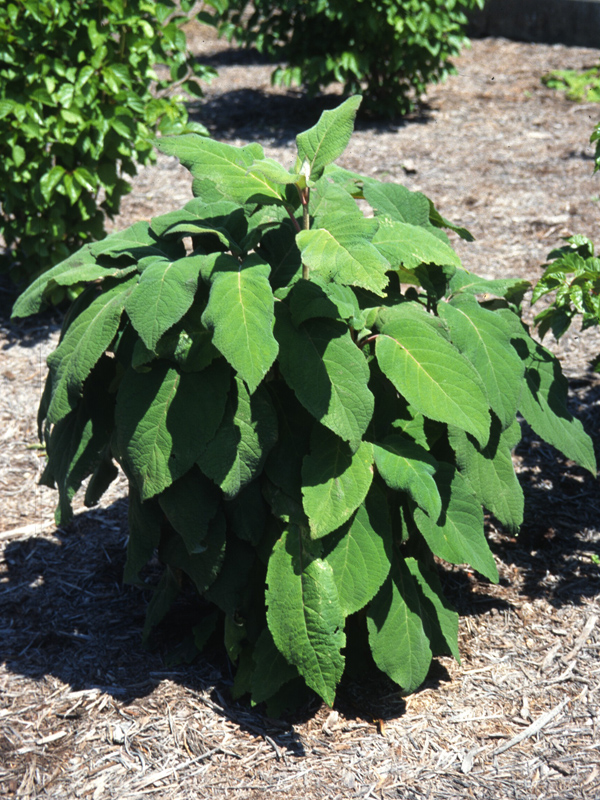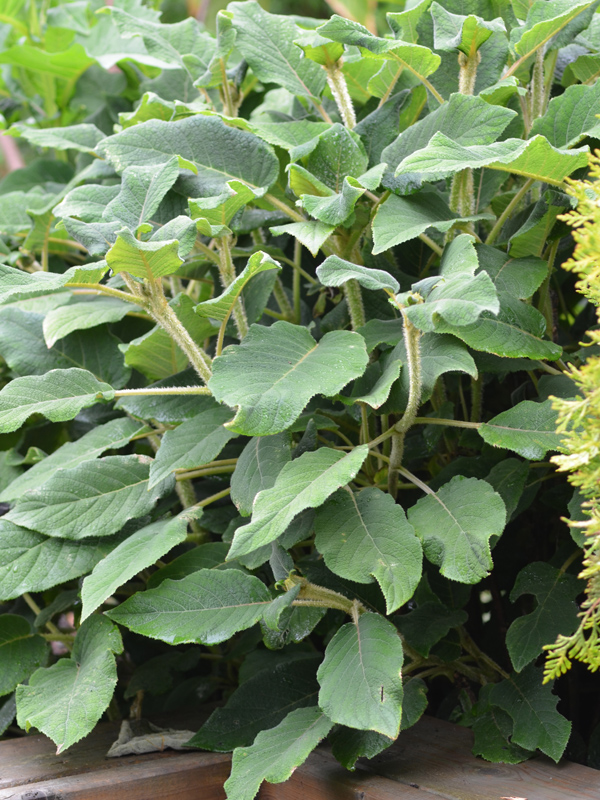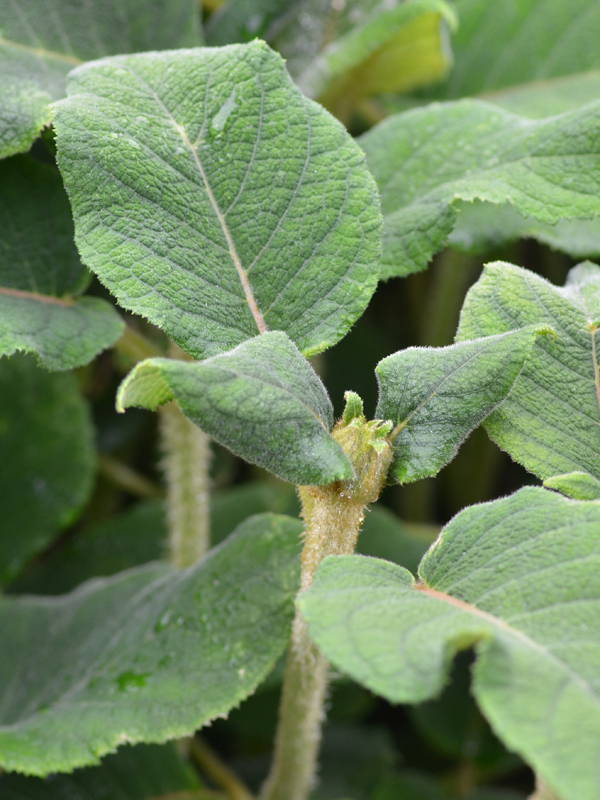| General Description | A deciduous shrub with flat flowering heads that contain a mix of fertile purple flowers and showy white, pink, or purple sterile outer flowers. |
| Shape | Bushy habit. |
| Landscape | Excellent addition to a flower border or flower bed. |
| Propagation | Propagate by softwood cuttings. |
| Cultivation | Grow in full sun or partial shade in a moist but well-drained soil. |
| Pests | Watch out for aphids, capsid bug and hydrangea scale (Pulvinaria hydrangeae). |
| Notable Specimens | Arnold Arboretum, Jamaica Plains, Massachusetts, United States of America.
, |
| Bark/Stem Description | Pubescent shoots that become hairless and often peeling. |
| Leaf Description | Leaves are softly pubescent, lanceolate, to 25 cm in length, and are dark green above and paler beneath. |
| Flower Description | Flowers appear in flat corymbs to 25 cm across with a mixture of small, fertile, purple flowers and showy white, pink, or purple infertile outer flowers. |


